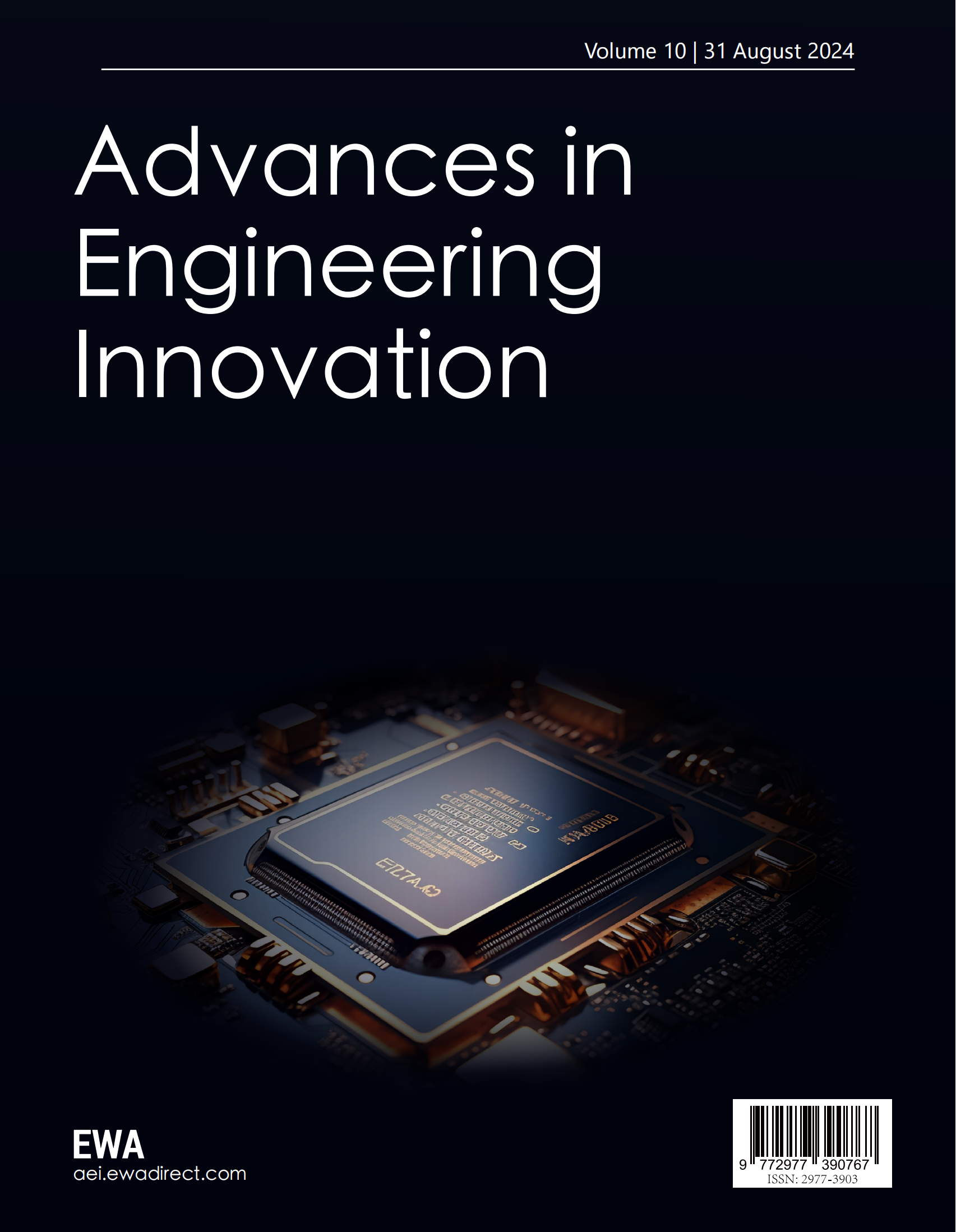1 Introduction
Environmental issues are currently gaining more attention, leading to the emergence of new energy fields. Technologies for utilizing biomass, solar, wind, hydro and geothermal energy have been developed. Electricity, being a high-quality energy source, has made significant advancements in some renewable energy technologies and has been implemented on a significant scale in various regions worldwide.[1] Electric vehicles are an emerging solution to environmental challenges in transportation. However, is the electric car the most environmentally friendly option in the transportation sector? This article examines whether electric vehicles offer the best environmental protection in transportation through the use of data.
This dissertation is divided into three parts: literature review, Discussion, and Conclusion. The Literature Review section is divided into three parts. The first part will mainly focus on the primary sources of energy for electric vehicles and will discuss in detail the cleanliness of electricity and the pollution caused by oil. The subsequent section will analyze data and structure individually to comprehend the disparities between electric and gasoline vehicles. The succeeding section will compare environmental pollution levels using predetermined evaluation criteria.
The ensuing discourse will predominantly deliberate on the environmental impact of electric and gasoline vehicles, contemplating structure, energy sources, cost, and technological maturity, with relevant data and criteria.
Finally, the dissertation will conclude by proposing potential challenges for electric vehicles and future issues that need addressing.
The aim of this dissertation is to demonstrate the environmental friendliness of electric cars compared to petrol cars.
2 Research review
2.1 Energy resource
Energy encompasses substances capable of producing different forms of energy like heat, electricity-ty, light, and mechanical energy or accomplishing work. Fuel-based and non-fuel-based energy sources are also distinguished. Fuel-based energy sources comprise coal, oil, natural gas, peat, and wood, whilst non-fuel-based sources consist of water, wind, geothermal, and ocean energy. Table 1 depicts the estimated potential and density of current energy sources on Earth.(ALAJINGI, R. & R, M. 2023)
Table 1. Existing energy sources estimated potential and energy density. (ALAJINGI, R. & R, M.2023)
Energy source |
Useful potential at present |
The energy density (at ideal) |
Solar |
12,000 EJ (EJ) per year |
1000 W/m2 (W/m2) |
Wind (On & Offshore) |
98,000 EJ per year |
2 (W/m2) – 5 (W/m2) |
Tidal |
800 TW-hour (TWR) per year |
1 (W/m2) – 10 (W/m2) |
Wave |
2000-4000 TWR per year |
1 to 50 kW/m 0f wavefront |
Biomass (Vary with the material) |
160-200 EJ per year |
4.7 MJ/kg to 26 MJ/kg |
Geothermal |
53,000 EJ per year |
1 (W/m2) |
Coal (Reserve) |
1139 billion metric tons |
24-29 MJ/kg |
Nuclear (Very high) |
80 million megajoules per kilogram |
|
Natural gas |
192 trillion cubic meters |
45-55 MJ/kg |
2.1.1 Petroleum and related affect
2.1.1.1 Definition and sources
Petroleum is a complex mixture of hydrocarbons found on earth in liquid, gas or solid form. As a natural resource, oil is usually considered to be in liquid form, commonly referred to as crude oil, but the technical term oil also refers to natural gas and the viscous or solid form, called asphalt, found in tar sands. The liquid and gaseous phases of petroleum are the most important major fossil fuels. By the beginning of the 20th century, the industrial revolution had developed to the point where the use of refined oil as a fuel was no longer the most important. The oil and natural gas industry has become a major supplier of energy, mainly due to the advent of the internal combustion engine, especially in automobiles. [9]. And sources of it, the crude oil and other liquids produced from fossil fuels are refined into petroleum products, which are used for many different purposes. Biofuels are also used as petroleum products, mainly blended with petrol and diesel.[4]
2.1.1.2 Petroleum pollution
Oil pollution refers to the pollution caused by the leakage and discharge of oil during oil extraction, transportation, handling, processing and use, which mainly occurs in the sea. Oil floats on the sea surface and spreads rapidly to form an oil film, which can be migrated and transformed through diffusion, evaporation, dissolution, emulsification, photodegradation and biodegradation and absorption. Oil can adhere to the gills of fish, suffocating them, inhibiting spawning and hatching of waterfowl, destroying the impermeability of their feathers, and reducing the quality of aquatic products. The formation of oil film can hinder the reoxygenation of the water body, affect the growth of marine plankton, and destroy the marine ecological balance, in addition to destroying the seashore scenery and affecting the aesthetic value of the seashore. Oil pollution prevention and control, in addition to controlling the source of pollution and preventing accidents, can be dealt with through oil booms, absorbing materials, oil eliminators and so on.[3] First, oil volatiles from oil spills pollute the atmosphere, indirectly producing carcinogens and destroying the ozone layer leading to the greenhouse effect. Secondly, when oil enters the soil, it destroys the soil structure, disperses the soil particles and reduces the permeability of the soil. Its reaction groups can combine with inorganic nitrogen and phosphorus and limit nitrification and dephosphorylation, thus reducing the effective phosphorus and nitrogen content of the soil. Especially the polycyclic aromatic hydrocarbons (PAHs), which are carcinogenic, mutagenic and teratogenic, and can be enriched in plants and animals’ step by step through the food chain, are even more hazardous when they accumulate in the soil. The third is the destruction of water sources by oil. Corrosion and seepage of oil pipelines pollute the soil and underground water sources, which not only cause salinization and poisoning of the soil, leading to soil destruction and wastage, but also its toxic substances can enter the food chain system through crops, especially underground water, and ultimately endanger human beings directly.[5]
2.1.2 Electricity and emerging energy sources
2.1.2.1 Electricity definition
Electricity is a phenomenon that is linked to stationary or moving electric charges. Electric charge is an essential property of matter and is carried by elementary particles. In the case of electricity, it is the electron that is involved and is designated a negative charge by convention. Therefore, the different manifestations of electricity are a result of the accumulation or motion of numerous electrons.[20] Current electricity is the form of electricity that makes all our electronic gizmos possible. This form of electricity exists when charges can flow continuously.[19]
2.1.2.2 Uses of electricity and emerging energy sources
Electricity is an essential part of modern life and is important to the world economy. People use electricity for lighting, heating, cooling, and refrigeration, as well as to operate appliances, computers, electronics, machinery, and public transportation systems.[6] Like electric cars, various new automotive technologies attempt to liberate cars from their reliance on fossil fuels. One solution is an all-electric and battery-powered car that produces no petrol or diesel fuel and yields no direct carbon dioxide (CO2) emissions. Nevertheless, up to two-thirds of the electricity utilized for charging car batteries is sourced by burning fossil fuels, which are the key contributor of greenhouse gas emissions in the United Kingdom. Furthermore, it is important to consider the CO2 emissions produced during the manufacturing process of both the car and battery. As a result, the carbon footprint of a battery electric vehicle (BEV) is significantly greater than anticipated.[27] As for energy before electricity is found and used, The renewable energy, also known as alternative energy, was seen as an emerging energy future , also stand by the energy obtained from sources that can be replenished, including the sun (solar energy), wind (wind power), rivers (hydroelectric power), hot springs (geothermal energy), tides (tidal power), and biomass (biofuels). In the early 21st century, approximately 80 percent of the world's energy supply was derived from non-renewable sources, such as coal, petroleum, and natural gas. Fossil fuels are finite resources. According to most estimates, the proven reserves of oil are sufficient to satisfy global demand until the middle of the 21st century at least. The combustion of fossil fuels has a variety of unfavorable environmental consequences.[28]
Currently, the use of energy, through the generation of electricity, supplied to the building, industry, transport and many other areas, then in the field of transport in this particular area, the private car as a relatively more accessible to everyone, is showing different paths of development, especially in the application of different energy sources, the car can be broadly divided into two categories of electric vehicles and fuel vehicles, the next step will be to discuss the main structure of the two types of vehicles and energy sources.
2.2 Conventional cars and electric vehicles
2.2.1 Conventional cars
Fuel powered vehicles are mainly composed of engine, transmission, transmission shaft, drive axle, wheels, chassis, body, electrical equipment, and other parts as shown in figure 1 below. Among them, the engine is the core component of a fuel powered vehicle, which generates power through the combustion of fuel to drive the vehicle forward. Those who still drive fuel cars are mainly characters with relatively poor financial conditions, as fuel cars are more affordable and accessible compared to electric cars. Fuel vehicles work by burning fuel to produce energy to drive the engine, which makes the vehicle move. The engine is the core component of a fuel vehicle, and various systems such as the fuel supply system, air supply system, ignition system, exhaust gas emission system and cooling system work together to ensure the normal operation of the engine. Afterwards, the chemical energy of the fuel is then converted into power through the engine, and then the power is transferred to the drive wheels through the transmission system of the chassis to make the vehicle move. The general advantage is that there are many petrol stations, so you can replenish energy anytime, anywhere. At the same time the range is relatively strong after all, if it is a general long-distance travel, fill up the tank will be enough. Secondly, fuel cars will not depreciate too much, in the second-hand car market, the sales of fuel cars have always been higher than new energy vehicles, and the price of second-hand fuel cars will not depreciate too much, they are all within the affordability of car owners. [2]
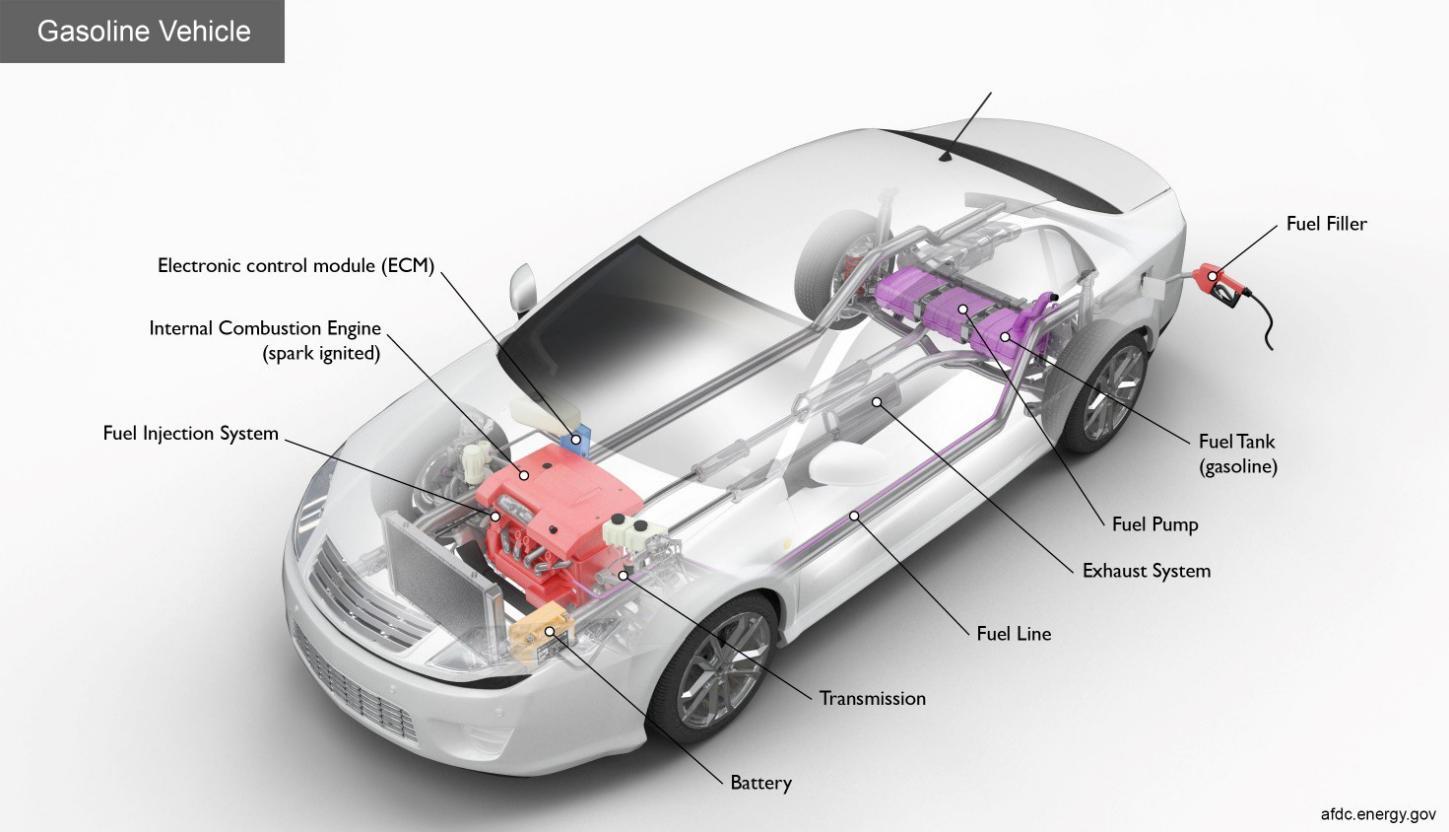
Figure 1. gasoline vehicle (Image from afdc.energy.gov)
2.2.2 Electric vehicles
In an electric car's fundamental layout as shown in Figure 2. The fundamental principle of electric vehicles involves utilizing an electric motor to transform electrical energy into mechanical energy, which propels the vehicle. The operational principle relies on magnetism, which differs considerably from that of an internal combustion engine vehicle. An automobile with an internal combustion engine is propelled by the explosive energy created by igniting a fuel and air mixture inside a cylinder, which then moves a piston. The piston's motion is converted into a rotary motion by a crankshaft, which ultimately drives the wheels. In contrast, electric vehicles create torque through electromagnetic induction to power their wheels. Compared to fuel vehicles, electric vehicles solely require electricity as a fuel source, preventing the emission of exhaust pollution, making them an environmentally friendly choice. Electric vehicles are also more energy-efficient and able to save energy. Additionally, the electric motor of an electric vehicle can recharge by recovering braking energy, prolonging battery life. [11]
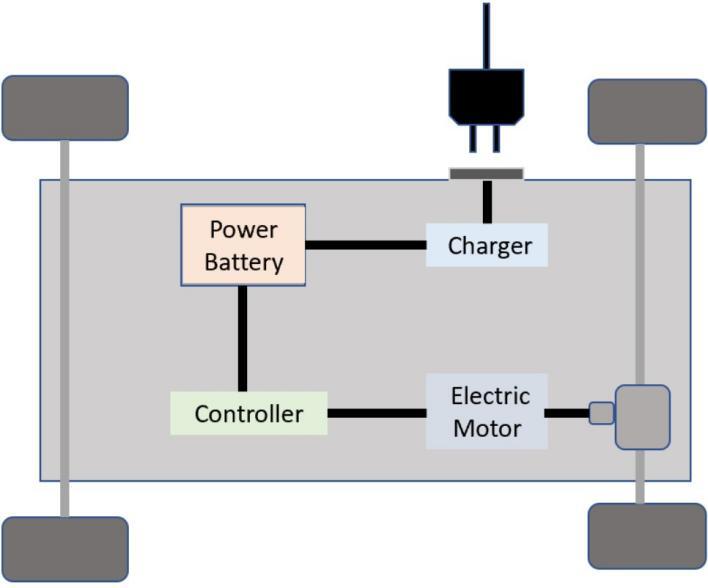
Figure 2. simple design of BEV
Electric vehicles mainly include pure electric vehicles (PEVs), hybrid electric vehicles (HEVs), and fuel accelerated electric vehicles (FCEVs)[14] Pure electric vehicles, also known as battery electric vehicles (BEVs), are completely powered by traction batteries (www.theguardian.com). Figure 2 shows the simple design of pure electric vehicles. Hybrid electric vehicles have two power sources, which combine the internal combustion engine system and electric propulsion system. The existence of power systems aims to achieve better fuel economy or performance than traditional cars [23] FCEV refers to the use of fuel cells rather than batteries, or electric vehicles powered by electric motors in combination with batteries or supercapacitors (although mature HEVs account for the largest proportion of the electric vehicle market, they are not completely fuel free). In addition, the market share of FCEVs is still very small [15] As of the end of 2018, the global FCEV inventory reached 11200 vehicles The adoption of FCEVs is mainly affected by the high allocation costs of vehicles and infrastructure. In contrast, pure electric vehicles are the best choice to solve environmental problems and energy crises because they have zero emissions and do not consume oil [12].Although the advantages of electric vehicles are undeniable for the vast majority of people from green communities, the necessity and cost of establishing such charging infrastructure make this issue less obvious. To address these issues, consideration should be given to the deployment and cost reduction of charging infrastructure [16]. The optimal location of charging infrastructure at the local level not only helps to maximize utilization, avoid traffic and parking problems, minimize grid pressure, but also contributes to investment returns, Due to new technological innovation and large-scale effects, the cost of charging infrastructure has decreased in the past few years. [17] But it still needs a lot improvement and got long way to go.
2.3 Evaluation criterion of car
There are several ways to assess the correlation between electric and conventional vehicles. These include price, fuel efficiency, mileage, and policies related to electric cars, which are general evaluation criteria for measuring vehicle quality. We discuss these criteria further below. [8]
2.3.1 Price cost between electric car and gas car
Normally, we use price to measure the value of a car. Usually, the price includes the cost of buying the car and the cost of repairing and maintaining. Currently, electric cars are purchased at a slightly higher price than oil cars. Nowadays the mean price tag of a fresh electric car in 2021 will exceed the industry mean by roughly £7,200, encompassing both petrol and electric vehicles. But the electric vehicle (EV) market is expanding rapidly, and it is expected that the price gap will narrow notably in the forthcoming years due to the production of more economical models by manufacturers and enhancements in battery technology, which is the costliest component of an EV. [21]
2.3.2 Fuel efficiency for electric and gas car
Meanwhile, fuel efficiency is also an important measure of the quality of the car, if electric drive components are highly efficient, electric vehicles can significantly save energy expenditure. It could be defined as the ability of an engine, especially that of a vehicle, to extract energy from fuel. Kilowatt-hours (kWh) per 100 miles (160 km) and miles per gallon of gasoline equivalent (MPEGs) are specific measures used for EVs and are important metrics to know. Modern light-duty pure electric vehicles (or PHEVs in electric mode) can achieve 130 MPEGs (miles per gallon equivalent) or more, and can travel 100 miles (160 km) on as little as 25 to 40 kWh, depending on how they are driven. Compared to comparable conventional gas vehicles, HEVs often have lower fuel costs and better fuel economy. [24].
2.3.3 Relevant policies on electric cars
Subsidies and tax reductions for electric cars increase convenience for buyers. In China, for example, the central government provides policy bonuses to new energy vehicle manufacturers, ranging from 35,000-60,000 RMB/vehicle. The amount of the bonus varies according to the difference in mileage between battery electric vehicles (BEVs) and plug-in hybrid electric vehicles (PHEVs), which is regraded at a rate of 5% per year. From 2016 to 2020, the subsidy for battery electric vehicles (BEVs) and plug-in hybrid electric vehicles (PHEVs) increased by 20% annually. Consumers purchasing BEVs and PHEVs will pay based on the selling price minus the subsidy.
2.3.4 Mileage of electric car and gas car
When evaluating a car, the same distance unit of kilometers is used. Mileage, which refers to the distance a vehicle can travel using a specific amount of fuel, is often utilized by car manufacturers in their advertising campaigns. While superior batteries used in electric vehicles are designed for extended longevity, they will inevitably deteriorate. Many electric car manufacturers offer eight-year or 100,000-mile warranties on their batteries. This is reasonable because the battery serves as an EV's fuel tank, and thus, it must last as long as possible. [24]
3 Discussion / Development
The present discussion expounds on the environmental effects of electric cars in the short and long run, examining criteria such as price, fuel efficiency, and environmental impacts. By comparing and contrasting assessment criteria for electric and fuel vehicles, this paper reveals insights into their performance, environmental impact, and cost-effectiveness. However, both options have their prosand cons, including considerations around safety. The basic structure of electric and petrol cars is similar, but their advantages and disadvantages are mainly related to energy. However, there are many other variables to consider, such as whether other emerging energy sources can be used to fuel vehicles. For example, whether there is a greater future for electric cars.
3.1 Price
In terms of price from an economic point of view, despite the rapid rate of updating and iteration, electric vehicle technology is not yet mature enough. It is foreseeable that with future technological advances and developments, the price of electric vehicles will drop significantly just like the graph shows below.
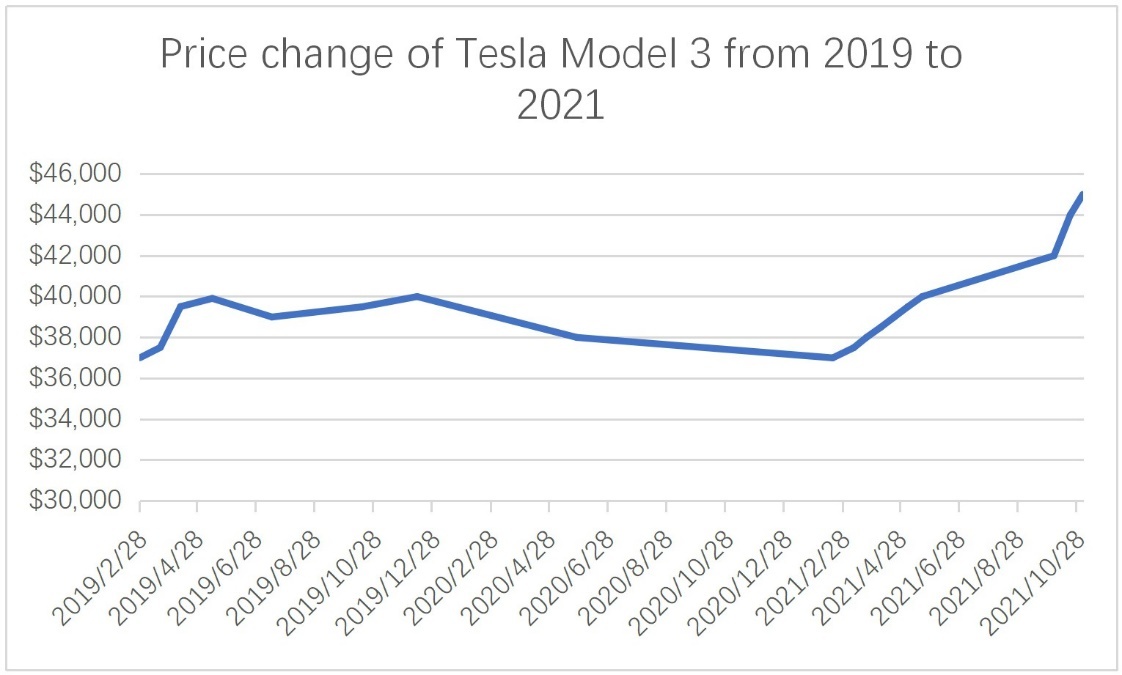
Figure 3. price change of Tesla model 3 from 2019 to 2021
From a maintenance point of view, fuel vehicles have a clear advantage over electric vehicles. This is due to an extensive ready market, a well-developed spares sector and low maintenance costs. According to Figure 4, the market share of electric cars has increased from 4% to 17% and is expected to rise substantially in the future, reaching a high of 34%. This is in contrast to the significant decline in market share of fuel cars, while hybrid cars fluctuate around 30%.
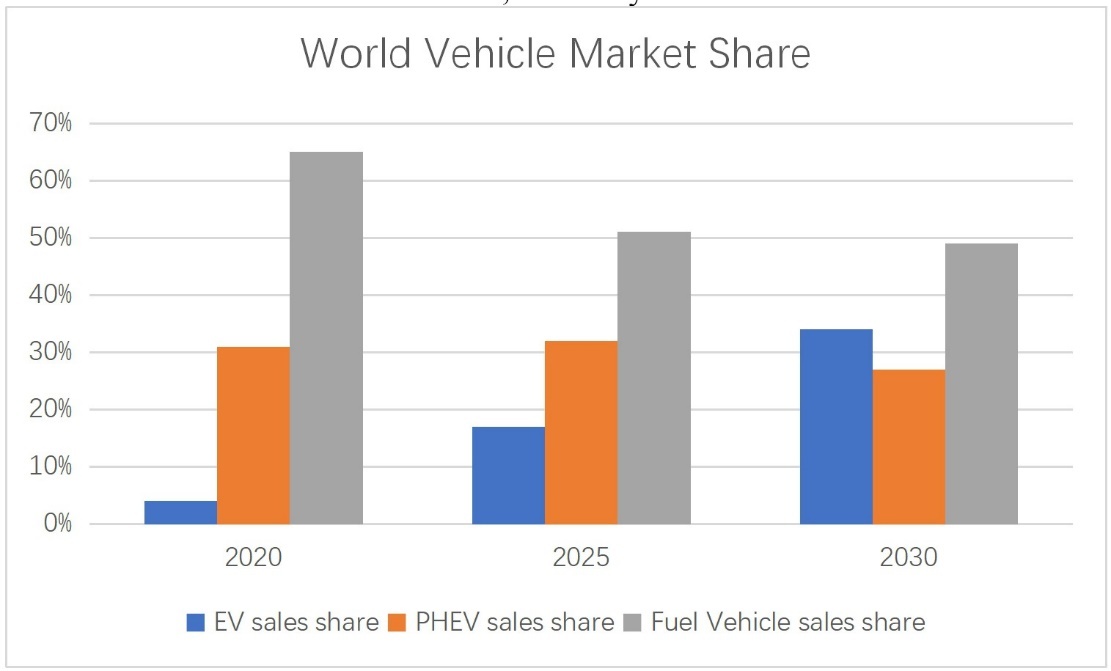
Figure 4. World Fuel Vehicle Market Share [18]
Electric vehicles (EV), on the other hand, have much higher maintenance costs than fuel vehicles due to factors such as frequent updates and a small spare parts market. According to Figure 4, between 2020 and 2030, the market share of electric vehicles (EVs) is steadily increasing from 4% to 34%, while the market share of traditional fuel vehicles is projected to fall below 50% from its initial share of 65%. Based on the data, the proportion of new vehicles that are electric is predicted to be increase as shown in Figure 5. This increase will definitely come with a tin price while its market share as rise dramatically.
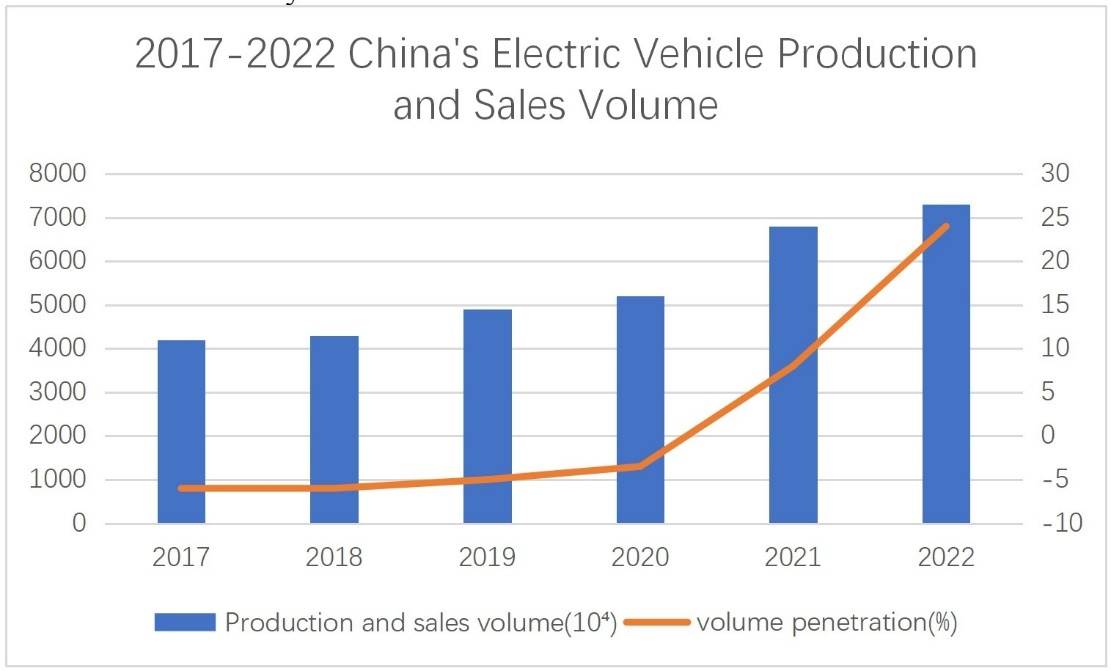
Figure 5. 2017-2022 China's Electric Vehicle Production and Sales Volume
Some argue that the low price of petrol cars is due to the rich industrial chain and the fact that development of electric cars is still in its early stages. Additionally, petrol cars maintain an advantage in low production costs. However, others contend that electric cars are more cost-effective in the long run due to their potential for further development. Eventually, electric cars are expected to catch up with petrol cars once the cost price declines. Overall, the future electric car has a greater price advantage. Figure 4 illustrates that the sales and manufacturing volume of electric cars have increased annually, resulting in a growth in market share to 25%. Therefore, the future development potential for electric cars is substantial and the cost of reducing space is higher. In the future, the development of oil-powered cars may be restricted, leading to potential cost increases. In the short term, the price of these cars may be more favorable than electric cars. However, when considering the long-term trend, electric cars are ultimately the more advantageous choice. As shown by the rise in EV prices depicted in Figure 3, the growth and expansion of the EV market will result in corresponding cost increases due to the gradual rise in market share.
3.2 Environmental impacts
The study suggests that utilizing electric vehicles (EVs) powered by low-carbon electricity sources can lower the impact of personal transportation on greenhouse gas discharge and the inhalation of exhaust fumes. Nevertheless, the study emphasizes the need to address "problem-shifting" points when analyzing such matters. When comparing conventional vehicles and EVs, it is important to consider the production process, despite much research being focused on the usage phase of transportation. With this in mind, the study developed a transparent life cycle inventory for both traditional and electric cars, which was used to evaluate them across various impact areas. It was found that, assuming a 'lifespan' of 150,000 km (which is probably an underestimate as current EVs are forecast to have a lifespan more than twice that), EVs fueled by the 2012 European energy mix offer a 10% to 24% decrease in global warming potential (GWP) compared to conventional petrol or diesel vehicles. This is a significant improvement, although there are trade-offs. The enhanced carbon emissions performance of EVs comes with associated costs.[24] In general, Petrol technology is relatively more mature than electric technology, but the cost and carbon emissions of petrol are much higher than those of electric vehicles, as shown in Figure 6. From Figure 6, it becomes evident that currently, carbon dioxide emission reduction in automobiles is still insufficient in China and India, while similar results are observed for the rest of Europe and the US. This implies that there are still several automobiles with inadequate carbon dioxide emission reduction in the world.
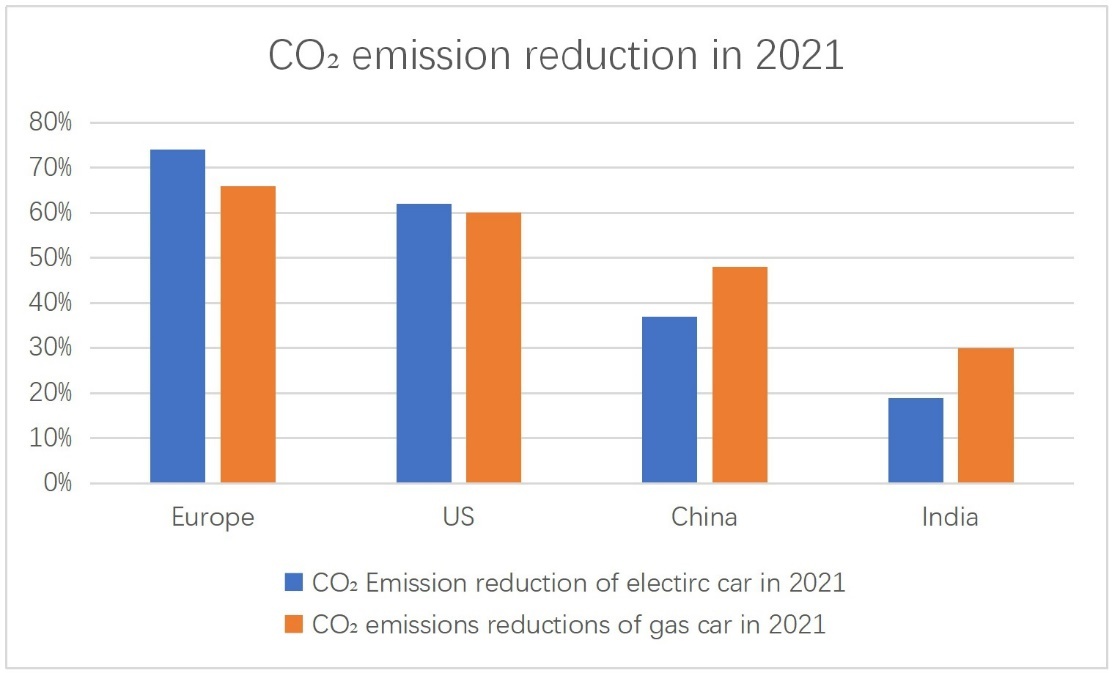
Figure 6. CO2 emission reduction of car in 2021
Some argue that electric cars are a greener alternative to oil-fueled cars. Firstly, cars that run on oil contribute to environmental pollution throughout their production and usage. Burning petrol and diesel releases greenhouse gases, such as nitrogen oxides, which pollute the atmosphere. In contrast, electric cars can operate without causing pollution and do not harm the urban environment.
Secondly, wind-generated electricity can serve as an additional energy source to power charging columns or be stored and provided to charging stations with low-priced electricity, enabling eco-friendly charging. However, this is contingent on the advancement of energy storage technology. Energy storage technology, poor thermal management, and waste of energy can be mitigated through the use of battery technology and heat engines, thereby enhancing energy utilization and reducing heat dissipation in tanker operations. Technical abbreviations will be clearly explained. The importance of employing battery and heat engine technology in tanker operations will be highlighted, as these offer solutions for reducing energy waste and facilitating maximum energy utilization. [7]
Concerning the environment, some people argue that electric vehicles are not ecologically sound due to the batteries used to generate electricity, which are not themselves environmentally friendly. As electric vehicles gain popularity, there will be an increased demand for vehicle-specific raw materials, particularly for batteries. With the surge in sales of electric passenger vehicles, new vehicle registrations in 2022 have increased by 55% compared to 2021. As a result, the demand for automotive lithium-ion (Li-ion) batteries is expected to rise from around 330 million GWh in 2021 to 550 million GWh in 2022, which represents a 65% increase. [18] Therefore, it can be posited that lithium-ion batteries will become the norm for electric vehicles in the coming decade. The required constituents of these batteries will mainly comprise chemicals such as graphite, cobalt, lithium, manganese, and nickel, as illustrated in Figure 6. Lithium batteries are presently a major environmental concern due to their expensive raw materials, all of which hold significant value.
This is especially true in light of a shrinking global supply of key materials. Furthermore, lithium batteries demonstrate low material recycling rates and are not inherently pollution-free activities. Pyrometallurgy is a highly energy-intensive process that results in the emission of greenhouse gases and the production of toxic gases or waste streams that may require landfill disposal. Additionally, "black lumps", which are intermittent products comprised of lithium, manganese, and cobalt, may contain other hazardous chemicals, such as alkyl fluorophosphates, which pose serious health risks. [30]
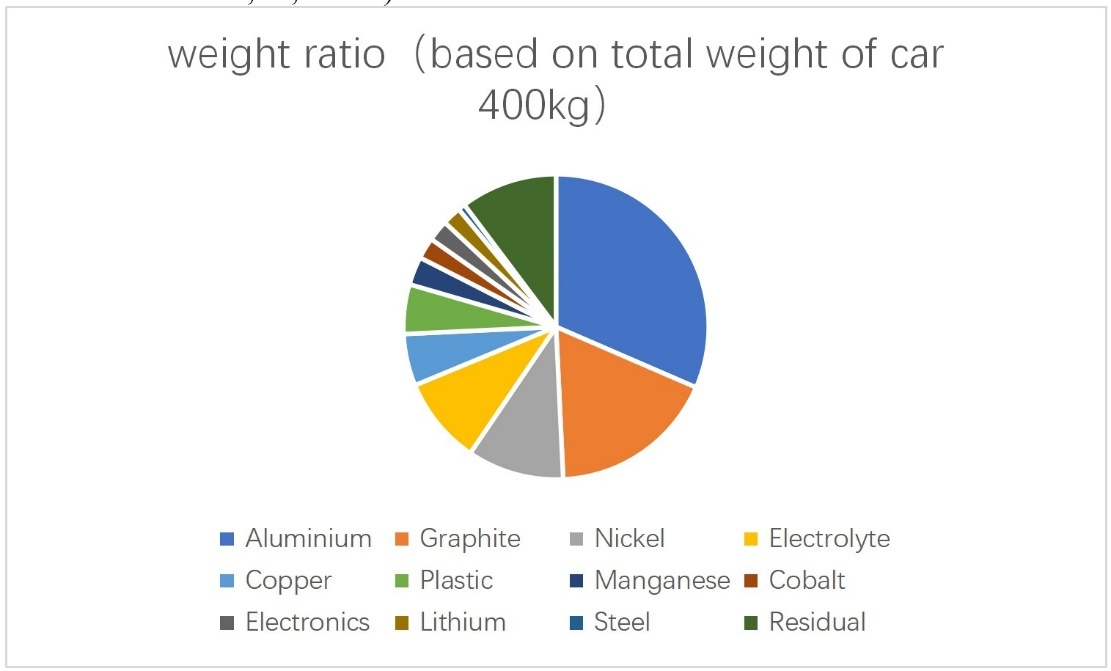
Figure 7. Weight ratio in battery of electric car
As for Temporary shortages or price increases of certain raw materials may occur, particularly if new production facilities need to be established, there is high demand, or if exporting countries experience issues, such as Russia's energy problems. These problems can indirectly contribute to increased pollution due to the sources of electricity generation being less environmentally friendly. Additionally, the use of these rare materials may result in their scarcity in specific areas in the future.[10]
Besides, the world is still dominated by thermal power generation. [22] Furthermore, thermal power generation still dominates the world's energy production, and supposedly
eco-friendly sources of electricity are not actually environmentally beneficial. With this in mind, it can be concluded that electric cars are also not a truly environmentally friendly means of transportation. Conventional vehicles (CVs), which use petroleum as the only source of energy, represent the majority of the existing worldwide on-road vehicles today. As shortage of petroleum is considered as one of the most critical worldwide issues, costly fuel becomes a major challenge for CV users. Moreover, CVs emit greenhouse gases (GHG), thus making it harder to satisfy stringent environmental regulations. A practical and realistic solution lies in electric and plug-in hybrid electric vehicles (EVs/PHEVs). Moreover, traction inverter and electric machine issues also need a serious thought. The bottleneck for EVs is the high voltage battery pack, which utilizes most of the space and increases the weight of the vehicle.
At the same time, the large transportation sector will rely more heavily on electricity and related infrastructure needed for storage and distribution. All the above issues point toward the realization of public and private facilities to generate electricity locally, to recharge EVs and PHEVs. [29] In terms of carbon dioxide emissions. Increasing energy efficiency in electric transportation systems is a topical issue, considering the worldwide concern for reducing CO2 emissions, and especially through the significant reduction in energy loss and energy consumption.[26] All signs point to a tipping point for electric vehicles (EVs) in the coming years, with widespread adoption in many countries. Eleven percent of new cars sold globally are now fully electric. And new policies, such as tax credits for electric cars in the US Inflation Reduction Act (IRA) and regulations banning the sales of fossil fuel-powered cars after 2035 in Europe and California, are accelerating EV sales. Anticipating rapid growth, automakers plan to spend $1.2 trillion by 2030 designing and building EVs. That’s likely to be good news for the climate, since the transportation sector (mostly cars and trucks) emits more planet-warming CO2 than any other sector in the United States.[13]
As far as the environmental issue itself is concerned, electric cars are relatively more likely to be favored by the public than fuel vehicles, and not only that, because of the uniqueness of the fuel used by oil vehicles, any number of factors can affect the environmental impact of electric cars. [25] The escalation of the Russian-Ukrainian war has led to a significant surge in oil and gas prices, owing to Russia's standing as one of the world's largest producers of such commodities. As per the U.S. Energy Information Administration, the Russian hydrocarbon industry is presently the third largest oil producer globally. Notably, Russia remains the principal supplier of oil and gas imports to Europe, with most of these imports being sourced from this nation. Europe is a significant source of income for the Russian hydrocarbon sector. The European Union acknowledges its reliance on Russia's hydrocarbon industry. Nevertheless, after the Russian armed forces invaded Ukraine in August 2022, several Western nations imposed impactful economic sanctions to undermine Russia's economy. President Biden signed an executive order in March
2022, forbidding the importation of Russian oil, gas, and coal into the United States. The United Kingdom has announced its plan to phase out all imports from Russia by the end of 2022, including a ban on hydrocarbon product imports. The European Union also declared its aim to reduce Russian oil imports by two-thirds. Following the invasion of Ukraine and a series of responses from Western countries, oil and gas prices experienced a significant increase. [25] Based on this analysis, it can be inferred that the price of oil is likely to increase in the near future, rather than decrease. Moreover, the Russian oil pipeline blockade (as shown in Figure 8, which has a significantly drop in import volume since the war begin) will further contribute to the oil price increase. Therefore, the electric car is comparatively more economical and advantageous option.
Due to the economic sanctions, it is possible that the cost of fuel cars may increase. This, in turn, could affect the price of fuel cars.
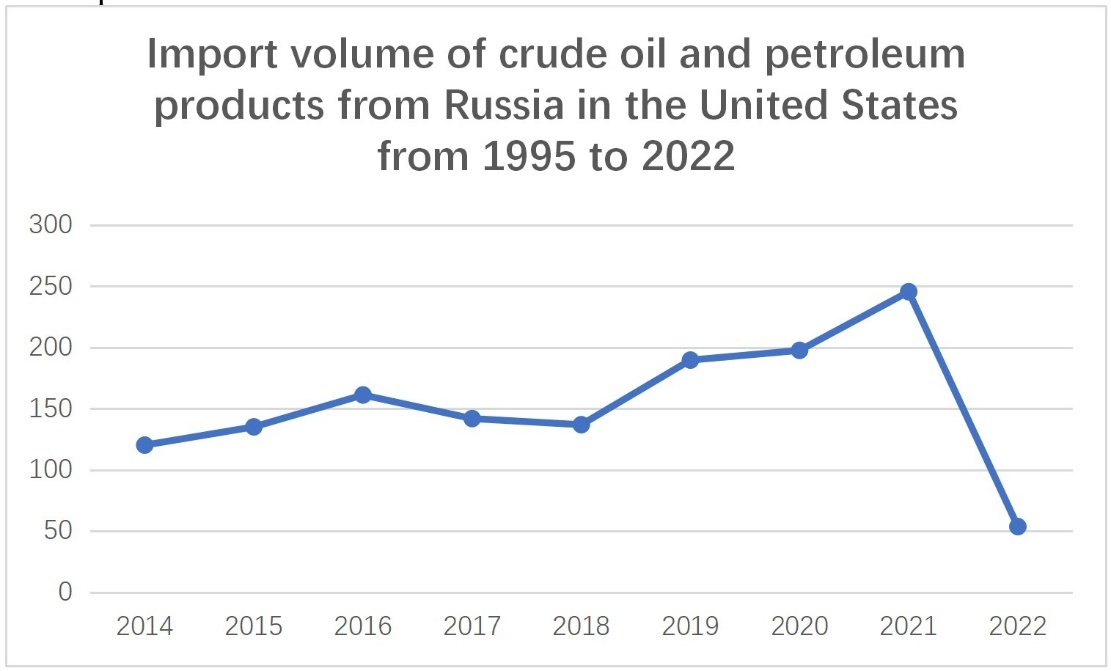
Figure 8. Import volume of crude oil and petroleum products from Russia in the United States from 1995 to 2022(in million barrels) (Statista Research Department,2023)
To summaries, as far as the environmental issue itself is concerned, electric cars are relatively more likely to be favored by the public than fuel vehicles, although the environmental benefits of electric cars may not be immediately apparent, in the long run, electric cars offer significant advantages in terms of affordability, environmental conservation, and efficiency.
3.3 Fuel efficiency
Fuel efficiency is also a great concern. For example, according to sources such as FuelEconomy.gov, the estimated combined city/highway fuel economy for the 2021 Toyota Corolla Hybrid is 52 miles per gallon (MPG), compared to 34 MPG for the standard four-cylinder automatic Corolla. Duty cycle (the ratio of the time a load or circuit is ON to the time it is OFF) has a significant impact on the fuel economy of medium and heavy-duty pure electric vehicles and PHEVs. However, in the right situations, all-electric vehicles continue to outperform their conventional counterparts in terms of fuel efficiency [24]. Compared to comparable conventional gas vehicles, HEVs often have lower fuel costs and better fuel economy.
In the context of internal combustion engine vehicles, efficiency and fuel consumption are interchangeable. However, this is not applicable to electric vehicles since they lose energy during the charging process and while in standby mode. The efficiency rating of an electric vehicle is typically expressed in MPGe or miles per gallon equivalent and factors in all energy consumed by the vehicle. In the case of the Tesla Model 3, the battery's state of charge is expected to decrease by approximately 1% for each day of inactivity. However, in cold Midwestern winters with temperatures plummeting to -10 degrees, we have already observed the long-term Model 3's charge increase by 12% within a single day. It should be noted that pre-treating the car's cab using energy (from either the wall or the battery, if unplugged) to heat or cool it is another type of energy consumption not factored into the overall consumption data. The energy efficiency rating of an electric vehicle is commonly measured in MPGe or miles per gallon equivalent, taking into account all energy used by the vehicle. MPGe represents the distance that an electric car can travel on the energy equivalent of one gallon of petrol (as defined by the EPA as 33.7 kilowatt-hours, although this can slightly vary between fuel blends). This metric is intended to facilitate comparison of electric vehicle efficiency. Data from our long-term test of a 2019 Tesla Model 3 with Remote Dual-Motor highlights the disparity between an electric car's fuel consumption and capability. The
Model 3 consumed the most energy during January 2021, a cold month with an average temperature of 30 degrees Fahrenheit. It used 358 watt-hours to cover each mile, which is equal to 2.8 miles per kilowatt-hour. Therefore, approximately one-fifth of a car's entire energy consumption occurs when the car is stationary. Although this may seem inefficient, overall these statistics are superior to those for petrol or diesel vehicles. The latter squander a substantial amount of the fuel's energy (between 65 to 75 per cent for non-hybrid petrol cars and 65 to 70 per cent for diesel), which renders other aspects (like cabin temperature control) almost negligible. [30]
4 Conclusion
This study evaluates the sources, costs, environmental impacts, fuel efficiency, vehicle decay rates, and other factors of electric and conventional fuel vehicles and draws the following conclusions
A comparison of the two leads to the following conclusions. Although energy prices may indicate that electric vehicles are cheaper, the cost of purchasing an electric vehicle is much higher than that of a fuel vehicle. Nonetheless, the market for electric vehicles is expanding and costs are expected to decrease over time. The potential future benefits of electric vehicles were considered.
Comparing the technologies of automobiles and electric vehicles, it can be seen that fuel vehicles possess more advanced technologies. As a result, they can effectively reduce environmental pollution and lower costs. However, electric vehicles are a new industry with rapidly developing technology, which may not be perfect enough and may lead to safety hazards.
From the point of view of energy efficiency, electric cars are better than fuel cars in terms of overall consumption, because fuel cars consume a lot of fuel energy, as well as energy at rest.
In conclusion, electric vehicles may not be environmentally friendly in the short term, but in the future, they will become more environmentally sustainable and surpass fuel vehicles in terms of sustainability.
References
[1]. Baidu.com. (2023a). New energy [Online]. Baidu. Available at https://baike.baidu.com/item/%E6%96%B0%E8%83%BD%E6%BA%90/53368?fr=api_baidufanyi&fromtitle=%E6%96%B0%E5%85%B4%E8%83%BD%E6%BA%90&fromid=9657124 [Accessed].
[2]. Baidu.com. (2023b). Oil car [Online]. Baidu. Available at https://baike.baidu.com/item/%E7%87%83%E6%B2%B9%E8%BD%A6/60157185?fr=ge_ala [Accessed].
[3]. Baidu.com. (2023c). Oil pollution [Online]. Baidu. Available at https://baike.baidu.com/item/%E7%9F%B3%E6%B2%B9%E6%B1%A1%E6%9F%93/4981679#reference-1-1784850-wrap [Accessed].
[4]. U.S. Energy Information Administration (EIA). (2023). Use of oil [Online]. Available at https://www.eia.gov/energyexplained/oil-and-petroleum-products/use-of-oil.php [Accessed].
[5]. Sina.com.cn. (2010). Oil pollution [Online]. Available at http://news.sina.com.cn/z/2010shiyouwuran/index.shtml [Accessed].
[6]. U.S. Energy Information Administration (EIA). (2022). Use of electricity [Online]. Available at https://www.eia.gov/energyexplained/electricity/use-of-electricity.php [Accessed].
[7]. U.S. Energy Information Administration (EIA). (2023). Oil and petroleum products explained [Online]. Available at https://www.eia.gov/energyexplained/oil-and-petroleum-products/oil-and-the-environment.php [Accessed].
[8]. Aidoujun. (2022). China's electric vehicle development report, can Tesla be built with hundreds of billions of subsidies? [Online]. Zhihu. Available at https://www.zhihu.com/column/p/20361163 [Accessed].
[9]. Atwater, G. I., Riva, J. P., & McLeroy, P. G. (2023). Petroleum.
[10]. Backhaus, R. (2021). Battery raw materials: Where from and where to?
[11]. Bhatt, A. (2023). Electric cars: Structure [Online]. Available at https://www.engineersgarage.com/electric-cars-structure/ [Accessed].
[12]. Boqiang, L. W., & Wang, W. (2018). Why people want to buy electric vehicles: An empirical study in first-tier cities of China.
[13]. Carey, J. (2023). The other benefit of electric vehicles.
[14]. Cleantechnica.com. (2016). 1 million pure EVs worldwide: EV revolution begins! [Online]. Available at https://cleantechnica.com/2016/11/22/1-million-ev-revolution-begins/ [Accessed].
[15]. Das, H. S. T., & Yatim, A. H. (2017). Fuel cell hybrid electric vehicles: A review on power conditioning units and topologies. Renewable Energy.
[16]. Dong, J. L., Lin, C., & Lin, Z. (2014). Charging infrastructure planning for promoting battery electric vehicles: An activity-based approach using multiday travel data.
[17]. Hall, D. L., & Nicholas, L. (2017). Emerging best practices for electric vehicle charging infrastructure.
[18]. International Energy Agency (IEA). (2023). Global EV Outlook [Online]. Available at https://www.iea.org/reports/global-ev-outlook-2023 [Accessed].
[19]. Jimblom. (2013). What is electricity? [Online]. Available at https://learn.sparkfun.com/tutorials/what-is-electricity/all [Accessed].
[20]. Kashy, E., Robinson, F. N., McGrayne, S. B., & Suckling, E. E. (2023). Electricity.
[21]. Lindwall, C. (2022). Electric vs. gas cars: Is it cheaper to drive an EV?
[22]. Mankin, E. D. C. J. S. (2021). Thermal power generation is disadvantaged in a warming world.
[23]. Matthews, L., Riemer, M., Del Matto, T., & Cloet, N. (2017). Do we have a car for you? Encouraging the uptake of electric vehicles at point of sale.
[24]. McFadden, C. (2022). Just how eco-friendly are electric cars really? Let's find out [Online]. Available at https://interestingengineering.com/lists/are-electric-cars-eco-friendly [Accessed].
[25]. Pineda, M. E. (2022). Why are oil and gas prices going up: Impact of Russia-Ukraine war [Online]. Available at https://www.profolus.com/topics/why-are-oil-and-gas-prices-going-up-impact-of-russia-ukraine-war/ [Accessed].
[26]. Popescu, M. (2022). Energy efficiency in electric transportation systems. Energies.
[27]. The National Academy of Sciences. (2022). Emerging technologies [Online]. Available at http://needtoknow.nas.edu/energy/energy-sources/emerging-technologies/electric-vehicles/ [Accessed].
[28]. Selin, N. E. (2023). Renewable energy [Online]. Encyclopedia Britannica. Available at https://www.britannica.com/science/renewable-energy [Accessed].
[29]. Williamson, S. S., Rathore, A. K., & Musavi, F. (2015). Industrial electronics for electric transportation: Current state-of-the-art and future challenges.
[30]. Mrozik, W., Althaher, M., Heidrich, O., & Christensen, P. (2021). Environmental impacts, pollution sources, and pathways of spent lithium-ion batteries [Online]. Available at https://pubs.rsc.org/en/content/articlelanding/2021/ee/d1ee00691f#!#:~:text=On%20one%20hand%2C%20the%20increased%20number%20of%20LIBs,line%2C%20large%20numbers%20of%20LIBs%20reaching%20end-of-life%20%28EoL%29 [Accessed].
[31]. The Guardian. (2017). Electric and plug-in hybrid cars whiz past 3m mark worldwide [Online]. Available at https://www.theguardian.com/environment/2017/dec/25/electric-and-plug-in-hybrid-cars-3m-worldwide [Accessed].
Cite this article
Zhou,Y. (2024). Are electric cars environmentally friendly?. Advances in Engineering Innovation,10,64-75.
Data availability
The datasets used and/or analyzed during the current study will be available from the authors upon reasonable request.
Disclaimer/Publisher's Note
The statements, opinions and data contained in all publications are solely those of the individual author(s) and contributor(s) and not of EWA Publishing and/or the editor(s). EWA Publishing and/or the editor(s) disclaim responsibility for any injury to people or property resulting from any ideas, methods, instructions or products referred to in the content.
About volume
Journal:Advances in Engineering Innovation
© 2024 by the author(s). Licensee EWA Publishing, Oxford, UK. This article is an open access article distributed under the terms and
conditions of the Creative Commons Attribution (CC BY) license. Authors who
publish this series agree to the following terms:
1. Authors retain copyright and grant the series right of first publication with the work simultaneously licensed under a Creative Commons
Attribution License that allows others to share the work with an acknowledgment of the work's authorship and initial publication in this
series.
2. Authors are able to enter into separate, additional contractual arrangements for the non-exclusive distribution of the series's published
version of the work (e.g., post it to an institutional repository or publish it in a book), with an acknowledgment of its initial
publication in this series.
3. Authors are permitted and encouraged to post their work online (e.g., in institutional repositories or on their website) prior to and
during the submission process, as it can lead to productive exchanges, as well as earlier and greater citation of published work (See
Open access policy for details).
References
[1]. Baidu.com. (2023a). New energy [Online]. Baidu. Available at https://baike.baidu.com/item/%E6%96%B0%E8%83%BD%E6%BA%90/53368?fr=api_baidufanyi&fromtitle=%E6%96%B0%E5%85%B4%E8%83%BD%E6%BA%90&fromid=9657124 [Accessed].
[2]. Baidu.com. (2023b). Oil car [Online]. Baidu. Available at https://baike.baidu.com/item/%E7%87%83%E6%B2%B9%E8%BD%A6/60157185?fr=ge_ala [Accessed].
[3]. Baidu.com. (2023c). Oil pollution [Online]. Baidu. Available at https://baike.baidu.com/item/%E7%9F%B3%E6%B2%B9%E6%B1%A1%E6%9F%93/4981679#reference-1-1784850-wrap [Accessed].
[4]. U.S. Energy Information Administration (EIA). (2023). Use of oil [Online]. Available at https://www.eia.gov/energyexplained/oil-and-petroleum-products/use-of-oil.php [Accessed].
[5]. Sina.com.cn. (2010). Oil pollution [Online]. Available at http://news.sina.com.cn/z/2010shiyouwuran/index.shtml [Accessed].
[6]. U.S. Energy Information Administration (EIA). (2022). Use of electricity [Online]. Available at https://www.eia.gov/energyexplained/electricity/use-of-electricity.php [Accessed].
[7]. U.S. Energy Information Administration (EIA). (2023). Oil and petroleum products explained [Online]. Available at https://www.eia.gov/energyexplained/oil-and-petroleum-products/oil-and-the-environment.php [Accessed].
[8]. Aidoujun. (2022). China's electric vehicle development report, can Tesla be built with hundreds of billions of subsidies? [Online]. Zhihu. Available at https://www.zhihu.com/column/p/20361163 [Accessed].
[9]. Atwater, G. I., Riva, J. P., & McLeroy, P. G. (2023). Petroleum.
[10]. Backhaus, R. (2021). Battery raw materials: Where from and where to?
[11]. Bhatt, A. (2023). Electric cars: Structure [Online]. Available at https://www.engineersgarage.com/electric-cars-structure/ [Accessed].
[12]. Boqiang, L. W., & Wang, W. (2018). Why people want to buy electric vehicles: An empirical study in first-tier cities of China.
[13]. Carey, J. (2023). The other benefit of electric vehicles.
[14]. Cleantechnica.com. (2016). 1 million pure EVs worldwide: EV revolution begins! [Online]. Available at https://cleantechnica.com/2016/11/22/1-million-ev-revolution-begins/ [Accessed].
[15]. Das, H. S. T., & Yatim, A. H. (2017). Fuel cell hybrid electric vehicles: A review on power conditioning units and topologies. Renewable Energy.
[16]. Dong, J. L., Lin, C., & Lin, Z. (2014). Charging infrastructure planning for promoting battery electric vehicles: An activity-based approach using multiday travel data.
[17]. Hall, D. L., & Nicholas, L. (2017). Emerging best practices for electric vehicle charging infrastructure.
[18]. International Energy Agency (IEA). (2023). Global EV Outlook [Online]. Available at https://www.iea.org/reports/global-ev-outlook-2023 [Accessed].
[19]. Jimblom. (2013). What is electricity? [Online]. Available at https://learn.sparkfun.com/tutorials/what-is-electricity/all [Accessed].
[20]. Kashy, E., Robinson, F. N., McGrayne, S. B., & Suckling, E. E. (2023). Electricity.
[21]. Lindwall, C. (2022). Electric vs. gas cars: Is it cheaper to drive an EV?
[22]. Mankin, E. D. C. J. S. (2021). Thermal power generation is disadvantaged in a warming world.
[23]. Matthews, L., Riemer, M., Del Matto, T., & Cloet, N. (2017). Do we have a car for you? Encouraging the uptake of electric vehicles at point of sale.
[24]. McFadden, C. (2022). Just how eco-friendly are electric cars really? Let's find out [Online]. Available at https://interestingengineering.com/lists/are-electric-cars-eco-friendly [Accessed].
[25]. Pineda, M. E. (2022). Why are oil and gas prices going up: Impact of Russia-Ukraine war [Online]. Available at https://www.profolus.com/topics/why-are-oil-and-gas-prices-going-up-impact-of-russia-ukraine-war/ [Accessed].
[26]. Popescu, M. (2022). Energy efficiency in electric transportation systems. Energies.
[27]. The National Academy of Sciences. (2022). Emerging technologies [Online]. Available at http://needtoknow.nas.edu/energy/energy-sources/emerging-technologies/electric-vehicles/ [Accessed].
[28]. Selin, N. E. (2023). Renewable energy [Online]. Encyclopedia Britannica. Available at https://www.britannica.com/science/renewable-energy [Accessed].
[29]. Williamson, S. S., Rathore, A. K., & Musavi, F. (2015). Industrial electronics for electric transportation: Current state-of-the-art and future challenges.
[30]. Mrozik, W., Althaher, M., Heidrich, O., & Christensen, P. (2021). Environmental impacts, pollution sources, and pathways of spent lithium-ion batteries [Online]. Available at https://pubs.rsc.org/en/content/articlelanding/2021/ee/d1ee00691f#!#:~:text=On%20one%20hand%2C%20the%20increased%20number%20of%20LIBs,line%2C%20large%20numbers%20of%20LIBs%20reaching%20end-of-life%20%28EoL%29 [Accessed].
[31]. The Guardian. (2017). Electric and plug-in hybrid cars whiz past 3m mark worldwide [Online]. Available at https://www.theguardian.com/environment/2017/dec/25/electric-and-plug-in-hybrid-cars-3m-worldwide [Accessed].





